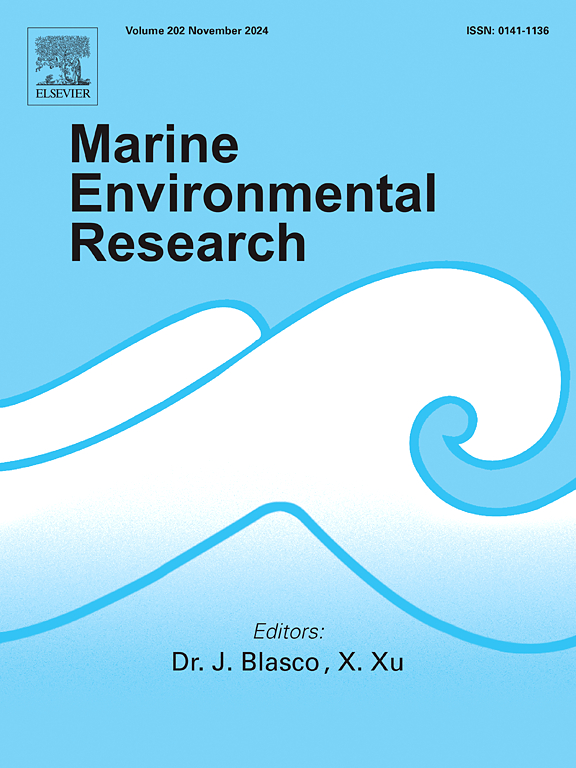Nitrogen utilization dynamics in a tropical estuary: Interplay of temperature and phytoplankton communities
IF 3
3区 环境科学与生态学
Q2 ENVIRONMENTAL SCIENCES
引用次数: 0
Abstract
Nitrogenous nutrients—such as nitrate (NO3−), nitrite (NO2−), ammonium (NH4+), and urea—are key drivers of phytoplankton productivity and biogeochemical cycles in marine ecosystems, often entering coastal zones through estuarine discharge. Estuaries, particularly tropical ones, play a vital role in regulating the composition and export of nitrogen (N) species to downstream coastal waters. Despite their ecological significance, the factors influencing N utilization in tropical estuaries remain poorly understood. In this study, we used 15N isotope tracer incubation techniques to explore the seasonal variations in the uptake rates of NO3−, NO2−, NH4+, and urea in the Dongzhai Harbor estuary, a tropical system in China. We found that while NO3− was the most abundant reactive N species in both seasons, NH4+ was preferentially taken up by phytoplankton during the warm season. Conversely, urea uptake increased unexpectedly during the cold season, likely due to shifts in phytoplankton community composition favoring urea-preferred taxa like Peridiniopsis. Seasonal variations in N uptake rates were primarily governed by temperature and phytoplankton community structure. Enhanced inorganic N uptake during the warm season reduced the export of reactive inorganic N, whereas higher organic N uptake in the cold season facilitated the inorganic N exported to coastal waters. These findings highlight the interplay between environmental drivers and community dynamics in shaping nitrogen cycling in tropical estuaries. They underscore the importance of managing nutrient inputs to potentially safeguard sensitive downstream ecosystems, such as coral reefs, from eutrophication and degradation.
求助全文
约1分钟内获得全文
求助全文
来源期刊

Marine environmental research
环境科学-毒理学
CiteScore
5.90
自引率
3.00%
发文量
217
审稿时长
46 days
期刊介绍:
Marine Environmental Research publishes original research papers on chemical, physical, and biological interactions in the oceans and coastal waters. The journal serves as a forum for new information on biology, chemistry, and toxicology and syntheses that advance understanding of marine environmental processes.
Submission of multidisciplinary studies is encouraged. Studies that utilize experimental approaches to clarify the roles of anthropogenic and natural causes of changes in marine ecosystems are especially welcome, as are those studies that represent new developments of a theoretical or conceptual aspect of marine science. All papers published in this journal are reviewed by qualified peers prior to acceptance and publication. Examples of topics considered to be appropriate for the journal include, but are not limited to, the following:
– The extent, persistence, and consequences of change and the recovery from such change in natural marine systems
– The biochemical, physiological, and ecological consequences of contaminants to marine organisms and ecosystems
– The biogeochemistry of naturally occurring and anthropogenic substances
– Models that describe and predict the above processes
– Monitoring studies, to the extent that their results provide new information on functional processes
– Methodological papers describing improved quantitative techniques for the marine sciences.
 求助内容:
求助内容: 应助结果提醒方式:
应助结果提醒方式:


